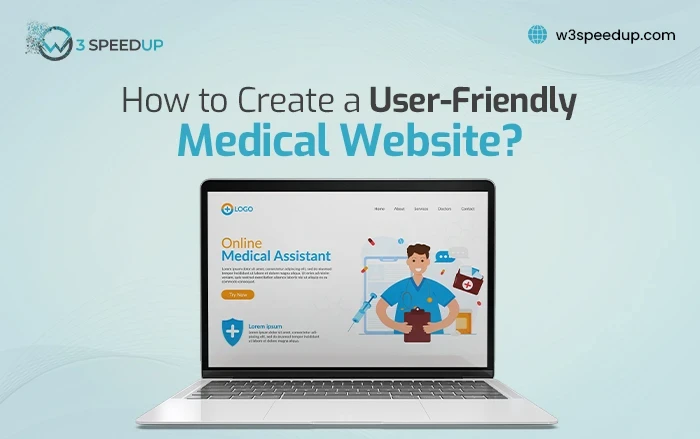In today’s digital age, a well-designed website is crucial for any medical practice or healthcare facility. It’s not just a virtual business card; it’s a tool for patient engagement, education, and care delivery. A medical website must be functional, user-friendly, and compliant with health regulations. Here are six essential tips to guide you in designing an effective medical website.
Hiring Professionals for Your Medical Website
Hiring professionals to design and manage your medical website can be a game-changer. Along with creating a visually appealing and user-friendly site, integrating Online Reputation Management for Doctors ensures that your digital presence remains strong, trustworthy, and credible, helping you attract and retain more patients.
They understand the nuances of healthcare regulations like HIPAA and can implement necessary security measures. Moreover, professionals can optimize your site for search engines, enhancing your online visibility, experts from Total Medical Design explain. A well-crafted website managed by experts can significantly boost patient engagement, streamline appointment scheduling, and enhance overall user experience. Investing in professional services, including a medical appointment scheduler, ultimately leads to a more polished, effective online presence that reflects the quality and credibility of your medical practice.
Prioritize User Experience (UX)
The user experience (UX) is the cornerstone of any successful website. For a medical website, it’s especially critical to ensure visitors can easily navigate the site to find the information they need.
 Clear Navigation
Clear Navigation
Design a simple and intuitive navigation menu. Important sections such as “Services,” “About Us,” “Contact,” “Appointments,” and “Patient Resources” should be prominently displayed. Avoid clutter and ensure that each page is no more than three clicks away from the homepage.
 Mobile Optimization
Mobile Optimization
With a significant portion of users accessing websites via mobile devices, ensure your website is responsive. A mobile-optimized site improves accessibility and user satisfaction, which is crucial for patient engagement.
 Fast Load Times
Fast Load Times
Ensure your website loads quickly. Compress images, use efficient coding practices, and consider a content delivery network (CDN) to enhance speed. Patients may leave if the site takes too long to load, especially in a medical emergency.
Emphasize Patient Trust and Security
Medical websites must convey trust and security, as they often handle sensitive information.
 HIPAA Compliance
HIPAA Compliance
Ensure your website is HIPAA compliant if it collects or stores patient information. This includes secure sockets layer (SSL) certificates for encrypted connections, secure patient portals, and proper data handling protocols.
 Professional Design
Professional Design
A clean, professional design can significantly impact a patient’s trust. Use a consistent color scheme, high-quality images, and professional fonts. Avoid overly flashy designs that can distract from the site’s purpose.
 Testimonials and Reviews
Testimonials and Reviews
Incorporate patient testimonials and reviews to build trust. Positive feedback from other patients can reassure new visitors about the quality of care they can expect.
Provide Comprehensive Information
Patients visit medical websites seeking information. Providing comprehensive, easy-to-understand content can help them make informed decisions about their health.
 Detailed Services Pages
Detailed Services Pages
Create detailed pages for each service you offer. Include descriptions, common procedures, conditions treated, and any special equipment or techniques used. This helps patients understand what to expect and reduces anxiety.
 Educational Content
Educational Content
Include a blog or resource section with articles, FAQs, and videos on various health topics. This not only provides value to your patients but also helps improve your site’s SEO.
 Physician Profiles
Physician Profiles
Feature detailed profiles of your healthcare providers. Include their qualifications, specialties, and a bit about their approach to patient care. A photo and a personal statement can make the profile more relatable and personable.
Simplify Appointment Scheduling
Making it easy for patients to schedule appointments can significantly enhance user satisfaction and streamline your practice’s operations.
 Online Booking System
Online Booking System
Implement an online booking system that allows patients to view available times and schedule appointments at their convenience. Ensure the system is user-friendly and integrates seamlessly with your practice management software.
 Appointment Reminders
Appointment Reminders
Automate appointment reminders via email or SMS. This reduces no-shows and ensures patients are reminded of their upcoming visits.
 Telehealth Options
Telehealth Options
Offer telehealth appointments if possible. Telemedicine has become increasingly popular, especially in light of the COVID-19 pandemic. Ensure your site clearly explains how to schedule and attend virtual appointments.
Enhance Accessibility
Accessibility is crucial for ensuring all patients, including those with disabilities, can use your website effectively.
 ADA Compliance
ADA Compliance
Ensure your website meets the Web Content Accessibility Guidelines (WCAG). This includes using alt text for images, providing transcripts for audio content, and ensuring the site can be navigated using a keyboard.
 Readable Content
Readable Content
Use simple language and avoid medical jargon where possible. Break up text with headings, bullet points, and images to make it easier to read. Consider offering content in multiple languages if you serve a diverse patient population.
 User Feedback
User Feedback
Regularly seek feedback from users to identify and address any accessibility issues. This can be done through surveys or usability testing sessions.
Designing an effective medical website involves more than just aesthetics. It requires a focus on user experience, security, comprehensive information, ease of appointment scheduling, accessibility, and SEO. By following these six essential tips, you can create a website that not only attracts new patients but also enhances the care you provide to existing ones. A well-designed website is a powerful tool in today’s healthcare landscape, fostering better communication, trust, and patient engagement.
 Christmas Mega Sale – Enjoy Up to 50% OFF on Every Plan!
Christmas Mega Sale – Enjoy Up to 50% OFF on Every Plan! 


